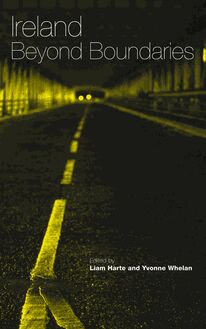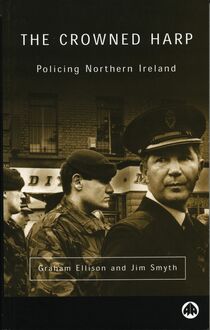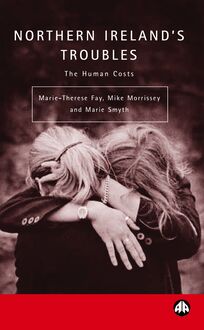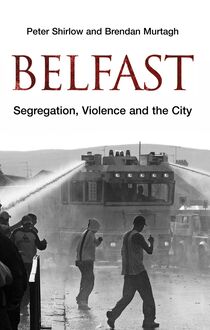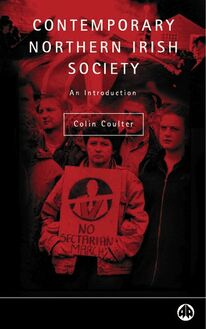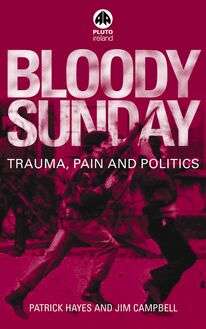-
 Univers
Univers
-
 Ebooks
Ebooks
-
 Livres audio
Livres audio
-
 Presse
Presse
-
 Podcasts
Podcasts
-
 BD
BD
-
 Documents
Documents
-
- Cours
- Révisions
- Ressources pédagogiques
- Sciences de l’éducation
- Manuels scolaires
- Langues
- Travaux de classe
- Annales de BEP
- Etudes supérieures
- Maternelle et primaire
- Fiches de lecture
- Orientation scolaire
- Méthodologie
- Corrigés de devoir
- Annales d’examens et concours
- Annales du bac
- Annales du brevet
- Rapports de stage
La lecture à portée de main
218 pages
English
Découvre YouScribe en t'inscrivant gratuitement
Je m'inscrisDécouvre YouScribe en t'inscrivant gratuitement
Je m'inscris
Obtenez un accès à la bibliothèque pour le consulter en ligne
En savoir plus
En savoir plus
218 pages
English
Obtenez un accès à la bibliothèque pour le consulter en ligne
En savoir plus
En savoir plus

Description
Of all the grave crises in Northern Ireland's history, the events of Bloody Sunday are perhaps the most notorious. The subject of an independent inquiry that is the longest and most expensive the British government has ever undertaken, this yet to be resolved issue continues to be one of the most significant events in the recent history of the Troubles.
This book tackles the subject from a new angle that covers both the political and psychological aspects of what happened. Based on extensive interviews with families whose relatives were killed by British soldiers, it is a record of the trauma that they have suffered. Setting Bloody Sunday in social, political and historical contexts, the authors examine the events of the day itself, the aftermath, and the relationship between post-traumatic stress disorder, grief, mourning and storytelling.
They conclude with accounts about state and community responses to the trauma, and the impact and implications of the Saville Inquiry, which has allowed family members to express publicly their stories about the events of Bloody Sunday.
1. Bloody Sunday In Context
2. Perspectives On State Violence
3. Posttraumatic Stress Disorder, Grief, Mourning And Healing
4. The Study Methodology
5. Bloody Sunday, 30 January 1972
6. The Traumatic Aftermath
7. State And Community Responses To Trauma
8. Bloody Sunday 30 Years Later
9. The Quest For Justice And Resolution Of Trauma? The Saville Inquiry
10. Witnessing Saville
Conclusion
Bibliography
Index
This book tackles the subject from a new angle that covers both the political and psychological aspects of what happened. Based on extensive interviews with families whose relatives were killed by British soldiers, it is a record of the trauma that they have suffered. Setting Bloody Sunday in social, political and historical contexts, the authors examine the events of the day itself, the aftermath, and the relationship between post-traumatic stress disorder, grief, mourning and storytelling.
They conclude with accounts about state and community responses to the trauma, and the impact and implications of the Saville Inquiry, which has allowed family members to express publicly their stories about the events of Bloody Sunday.
1. Bloody Sunday In Context
2. Perspectives On State Violence
3. Posttraumatic Stress Disorder, Grief, Mourning And Healing
4. The Study Methodology
5. Bloody Sunday, 30 January 1972
6. The Traumatic Aftermath
7. State And Community Responses To Trauma
8. Bloody Sunday 30 Years Later
9. The Quest For Justice And Resolution Of Trauma? The Saville Inquiry
10. Witnessing Saville
Conclusion
Bibliography
Index
Sujets
Informations
| Publié par | Pluto Press |
| Date de parution | 20 juillet 2005 |
| Nombre de lectures | 0 |
| EAN13 | 9781849641371 |
| Langue | English |
Informations légales : prix de location à la page 0,6250€. Cette information est donnée uniquement à titre indicatif conformément à la législation en vigueur.
Extrait
Bloody Sunday Trauma, Pain and Politics
Patrick Hayes and Jim Campbell
Pluto Press LondonDublinAnn Arbor, MI
First published 2005 by Pluto Press 345 Archway Road, London N6 5AA and 839 Greene Street, Ann Arbor, MI 48106
Distributed in the Republic of Ireland and Northern Ireland by Columba Mercier Distribution, 55A Spruce Avenue, Stillorgan Industrial Park, Blackrock, Co. Dublin, Ireland. Tel: + 353 1 294 2556. Fax: + 353 1 294 2564
www.plutobooks.com
Copyright © Patrick Hayes and Jim Campbell 2005 The right of Patrick Joseph Hayes and Jim Campbell to be identified as the authors of this work has been asserted by them in accordance with the Copyright, Designs and Patents Act 1988.
British Library Cataloguing in Publication Data A catalogue record for this book is available from the British Library
Library of Congress CataloginginPublication Data
Hayes, Patrick. Bloody Sunday : trauma, pain & politics / Patrick Hayes and Jim Campbell. p. cm. (Contemporary Irish studies) ISBN 0745318541 ISBN 0745318533 (pbk.) 1. Derry (Northern Ireland)History. 2. Political violenceNorthern IrelandDerryHistory20th century. 3. DemonstrationsNorthern IrelandDerryHistory20th century. 4. MassacresNorthern IrelandDerryHistory20th century. 5. Posttraumatic stress disorderNorthern IrelandDerry. 6. Derry (Northern Ireland)Social conditions. I. Campbell, Jim, 1956 II. Title. III. Series. DA995.L75H39 2003 941.6'210824dc21 2002152364
10 9 8 7 6 5 4 3 2 1
ISBN 0 7453 1854 1 hardback ISBN 0 7453 1853 3 paperback
Designed and produced for Pluto Press by Curran Publishing Services Printed and bound in the European Union by Antony Rowe Ltd, Chippenham and Eastbourne, England
Contents
List of Figures and Tables Acknowledgements
1
2
3
Introduction
Bloody Sunday in context The origins of the conflict Northern Ireland: a contested state Civil rights, increasing violence and internment Events leading to Bloody Sunday Bloody Sunday: the aftermath Northern Ireland postBelfast Agreement Summary
Perspectives on state violence Defining state violence State violence in Northern Ireland, 1921–98 Reforming the state and the resolution of conflict: Northern Ireland postBelfast Agreement Summary
Posttraumatic Stress Disorder, grief, mourning and healing The history of the concept of PTSD Biological perspectives and PTSD Type 1 and Type 2 traumas PTSD and the Troubles in Northern Ireland Grief, mourning and trauma Grief and mourning Children and grief Children and trauma Grief and trauma Longterm consequences of trauma Helping people with PTSD Storytelling and trauma resolution Summary
[ v ]
ix xiii
1
9 9 12 13 16 19 22 24
25 25 30
35 37
38 38 42 42 44 47 48 49 49 50 51 53 55 56
4
5
6
7
CONTENTS
The study methodology Rationale for the qualitative approach The study instruments The field process The study sample Data analysis: quantitative data Data analysis: qualitative data Study limitations Summary
Bloody Sunday, 30 January 1972 The beginning of the day Outcry and denial Hearing the news: ‘He’s dead’ Going across to Altnagelvin Traumatic stress and Bloody Sunday The funerals: ‘Thirteen coffins ... a side show’ Foreshortened life and survivor guilt Working through trauma Summary
The traumatic aftermath Trauma, grief and loss ‘We don’t talk about it’ Anger: ‘They were innocent ... Have to get a fair hearing’ The Bloody Sunday Justice Campaign: ‘I thought I could do something’ Antiviolence and apoliticism: protecting the next generation Summary
State and community responses to trauma The early period of the Troubles Direct rule and integrated service The ceasefires and after Dealing with the trauma of the past Helping the Bloody Sunday families State services
[ vi ]
58 58 59 62 63 64 66 67 69
70 70 74 75 80 82 86 89 91 93
94 94 99
100
102
103 108
109 110 111 113 117 118 120
8
9
10
11
CONTENTS
Nongovernmental agencies Summary
Bloody Sunday 30 years later Experiencing the peace in Northern Ireland Derry, August 2001 Grieving the lost relative Living with the inquiry The media and Derry response to the inquiry Summary
The quest for justice and resolution of trauma? The Saville Inquiry The Inquiry structure and process Legal procedures The magnitude and cost of the Inquiry Strengths and weaknesses of the Inquiry Will the Inquiry establish the truth and heal the wounds? Summary
Witnessing Saville Testimony: giving and getting support Experiencing the Inquiry day by day Hearing about the last moments of the dead Questions answered ‘Taking time out’ Repudiating Widgery Fairness of the process: hopes and fears Witness badgering Apportioning the blame ‘It’s worth it’ Summary
Conclusion Issues of methodology Complex trauma: implications for resolution Fear and a disempowered generation The human experience of trauma: loss
[ vii ]
125 128
129 129 130 133 135 140 143
144 147 148 149 150
152 154
156 156 158 159 160 162 163 164 165 167 171 172
174 174 175 176 177
CONTENTS
A normal funeral Justice, violence and politics 30 years after Bloody Sunday
Bibliography Index
[ viii ]
178 178 179
183 195
Figures and Tables
Figure
1
Segment of a NUD*IST Index Tree used to organise narratives
Tables
1 2
Characteristics of participants PTSD symptom inventory and GHQ12 mean scores and ranges.
[ ix ]
68
64
65
The authors dedicate this work to the memory of the 14 men who lost their lives as a result of shootings on the streets of Derry, 30 January 1972 during a civil rights march and to their families, their children and future generations who will continue to work with courage and dignity to achieve justice in order that they may grieve their dead.
[ xi ]
Acknowledgements
We are particularly grateful to all the Bloody Sunday family members who offered their hospitality and friendship, and shared their stories that made the completion of this book possible. Partic ular thanks are accorded to Dr John Pinkerton and Dr Karola Dillenburger of Queen’s University Belfast for their advice and encouragement at different stages of the research and writing up process. Dr Marie Smyth of the University of Ulster and INCORE provided the initial impetus for the project in Derry and deserves special thanks. Linda NashRoddy, whose brother William was killed on Bloody Sunday, gave a great deal of her time and effort in helping with the research, and introduced us to so many other family members. Without this invaluable relationship, this book would not have been possible. Sharon Meenan kindly permitted us to print the poem in the frontmatter. We also wish to thank Julie Stoll and Roger van Zwanenburg from Pluto Press for their help and patience in working with us towards the book’s conclusion, and Rosaleen Gormley for her secretarial expertise. Finally the authors wish to acknowledge their wives, Eileen Hayes and Anona Campbell, for their love and support.
[ xiii ]
I Wasn’t Even Born
I remember people happy and the confidence of that morning. The Creggan Shops. I remember the banner that was carried. The gathered message. I remember live fire. A pool of blood on the pavement. I remember Hugh Gilmore and Patrick Doherty. I remember running. The Flats. I remember Jim Wray and Michael McDaid. I remember screaming. English accents. I remember William Nash and Gerard McKinney. I remember a crazed army. A white hanky. I remember Michael Kelly and John Young. I remember it black and white. But blood is always red. I remember Jackie Duddy and Bernard McGuigan. I remember looking for my friend from the confusion and then through the quiet. I remember Gerard Donaghy and Kevin McElhinney. I remember hearing the news. I remember John Johnston and William McKinney. I remember thirteen coffins. Black flags. I remember a young woman with an old face. The funerals. I remember my father crying hot, angry tears. I remember the lies. And I wasn’t even born.
Killian Mullan and Sharon Meenan, Derry, 1997 used with permission.
[ xv ]
-
 Univers
Univers
-
 Ebooks
Ebooks
-
 Livres audio
Livres audio
-
 Presse
Presse
-
 Podcasts
Podcasts
-
 BD
BD
-
 Documents
Documents
-
Jeunesse
-
Littérature
-
Ressources professionnelles
-
Santé et bien-être
-
Savoirs
-
Education
-
Loisirs et hobbies
-
Art, musique et cinéma
-
Actualité et débat de société
-
Jeunesse
-
Littérature
-
Ressources professionnelles
-
Santé et bien-être
-
Savoirs
-
Education
-
Loisirs et hobbies
-
Art, musique et cinéma
-
Actualité et débat de société
-
Actualités
-
Lifestyle
-
Presse jeunesse
-
Presse professionnelle
-
Pratique
-
Presse sportive
-
Presse internationale
-
Culture & Médias
-
Action et Aventures
-
Science-fiction et Fantasy
-
Société
-
Jeunesse
-
Littérature
-
Ressources professionnelles
-
Santé et bien-être
-
Savoirs
-
Education
-
Loisirs et hobbies
-
Art, musique et cinéma
-
Actualité et débat de société
- Cours
- Révisions
- Ressources pédagogiques
- Sciences de l’éducation
- Manuels scolaires
- Langues
- Travaux de classe
- Annales de BEP
- Etudes supérieures
- Maternelle et primaire
- Fiches de lecture
- Orientation scolaire
- Méthodologie
- Corrigés de devoir
- Annales d’examens et concours
- Annales du bac
- Annales du brevet
- Rapports de stage
Signaler un problème
YouScribe
Le catalogue
Le service
© 2010-2024 YouScribe

